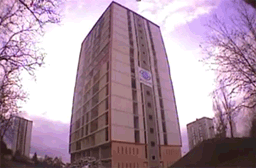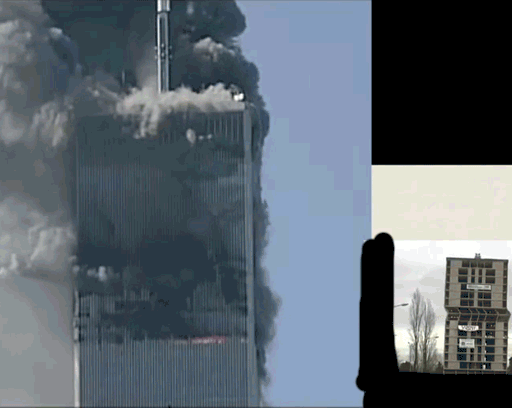What I see is are tower tops shedding their exterior columns whilst accepting floors. I think that floors beat, or at least match, the exterior in terms of mass.
It's materializing from beneath. It was building up on the underside of the tower top. We know this because it was there in the basement: a massive pancake of material. It was there IN THE SOLID.
Well let's say he contradicted the truth. It still seems to make him a liar. He can always apologize.
I don't have to prove that 0.7G was an unnatural rate of fall: YOU DO.
You don't understand what I mean, do you?
There you go again - thinking - rather than proving.
But of course you fail to accept that the dust
IS the concrete. And the concrete
IS the 'floors'. If the floors -made of concrete - turn to dust and fly all over Manhattan, then how can they simultaneously, as you claim - " beat, or at least match, the exterior in terms of mass"?
You are also able to imagine material
'materialising from beneath' , It was already there. It was already stationary, supported by undamaged columns, waiting to be struck by a diminishing mass from above. Each floor of concrete, when struck, then itself turned to dust, and that dust then flew in all directions - as observed. Mass decreased.
What 'pancake' in the basement ? You are now disagreeing with NIST, who discarded the 'pancake' theory very early into the investigation, when the realised that the lack of basement evidence made that untenable. The mass left in the basement was a tiny fraction of what should have been there if a 'pancake' effect had been real. Do a bit of research before you make such simple errors in future.
TS didn't lie. You failed to understand what he said, despite me explaining it to you. You repeat that calumny, and I again note that you have not been sanctioned for it.
As to proof of a theory. You have a theory that global collapse, with an acceleration of 0.7g, is
normal when highrise steelframe buildings catch fire. I disagree, and cite 100 years of past experience to support that view. Can you provide any evidence to support your own theory ? If not then I fall back on the basic requirement of science to ask you to demonstrate repeatabilty, under controlled conditions, before your theory can be considered further.
And your last point :- " You don't understand what I mean, do you" ?
Well - no. And I would refer you to Mick West on this subject, who holds the view that the onus is on the person who isn't understood to make the point clearer. You appear to hold opinions at variance with NIST. You appear to think that the mass of the building is increasing as it falls, rather than decreasing, and you seem to think that the basement was full of many dozens of 'floors' when clearly that wasn't so.
To summarise ; No, I don't understand, because you make no sense and prefer to insult people and provide no evidence to support your view. You say that you 'think' something as if that makes it fact. You produce calculations that simply prove themselves.
I think that you need to work on your theory a bit more and provide a modicum of proof, along with a more explicit explanation of what you 'think' was happening. And please try to be more polite, old boy.



